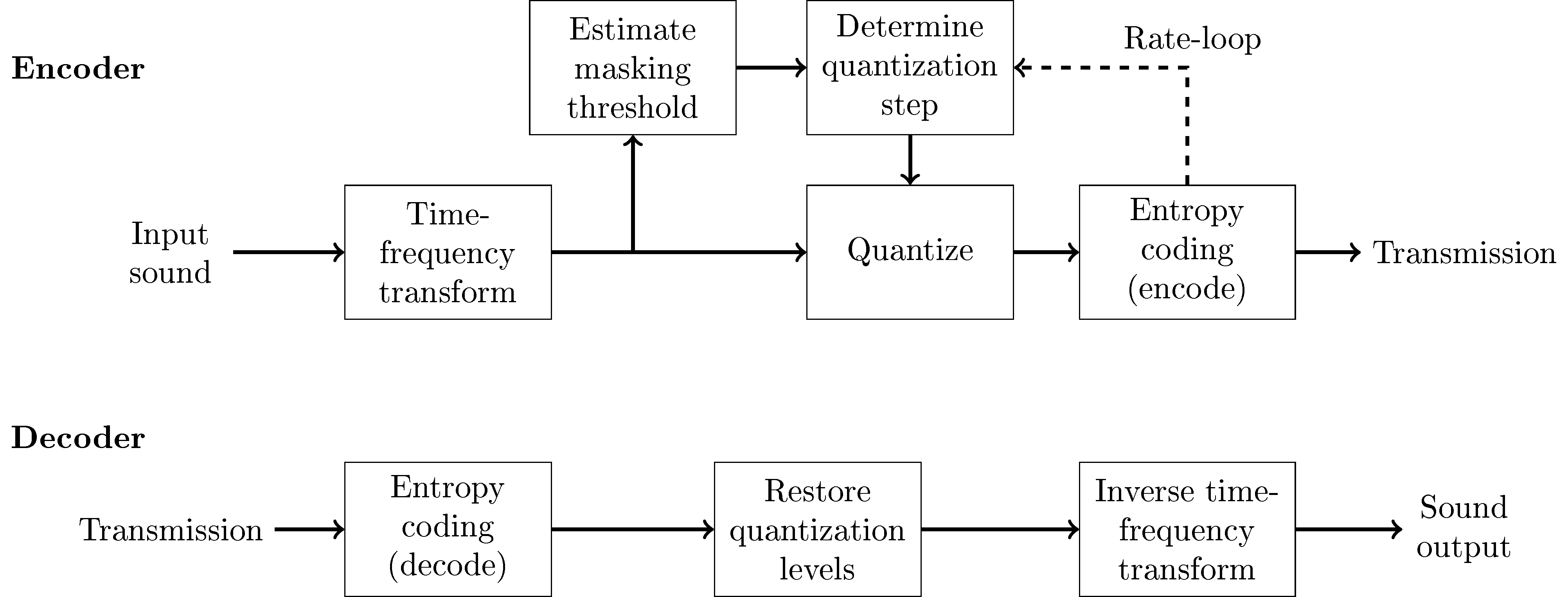10.3. Frequency-domain coding#
In audio coding, the classical approach is based on coding in the frequency domain, which means that we are coding a time-frequency representation of the signal. Such coding methods are especially suitable for signals which have prolonged stationary parts, such as many instrument-sounds, which are often stationary for the duration of a note, more or less. Frequency-domain codecs are based on entropy coding where the quantization accuracy is chosen with a perceptual model.
Classical speech coding is however based on code-excited linear prediction (CELP), which is a fundamentally different paradigm. In modern (mobile) applications, these two modalities, speech and audio are often intertwined and we would like to be able to encode all types of sounds. For example, a movie can have music, speech, speech with music in the background, music with spoken and sung parts, and there are frequent and seamless transitions between such modalities. For a unified codec, which can encode both speech, music, generic audio and their mixtures, we therefore needs codecs which support also frequency-domain coding. Besides, stationary parts of speech such as fricatives can sometimes be more efficiently encoded with frequency-domain coding anyway.
Such codecs, which encode both speech, music and generic audio are often collectively called speech and audio codecs. Most recent codecs such as MPEG USAC, 3GPP EVS and Opus are speech and audio codecs. Internally, they contain elements of both CELP and frequency-domain coding and they switch between these modes depending on the content.
More specifically, frequency-domain codecs are based on a time-frequency transform such as the MDCT, perceptual modelling to choose the quantization accuracy, and entropy coding to transmit the quantized signal with the least amount of bits. At the decoder, the process is reversed (as is obvious). In many designs, the bitrate is variable, such that with the perceptual model we choose the desired perceptual accuracy, and entropy coder compresses that as much as possible. Then we always have approximately the desired quality, but we however do not in advance know how many bits we will use. In other designs, we strive for fixed bitrate, such that we should reach the highest quality as long as the bit-consumption remains under a chosen limit. With most entropy codecs this means that we have to implement a rate-loop, where we iteratively search for the best quantization accuracy which remains within the chosen limit on bit-consumption.

